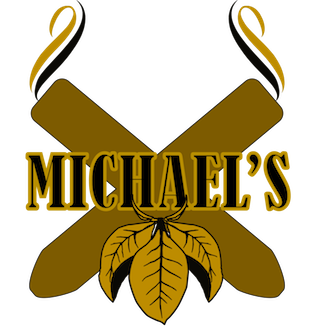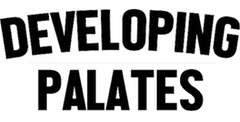Last week, the long-awaited Advanced Notice of Public Rule Making (ANPRM) in regards to premium cigars was officially announced by the U.S. Food and Drug Administration. On March 26th, 2018 the ANPRM was published in the Federal Register. It’s a document that paints the picture in terms of what the FDA is thinking – namely how or if it should regulate premium cigars. If you go back to late July, FDA Commissioner Dr. Scott Gottlieb announced as a part of his plan to develop a comprehensive program around reducing nicotine that the question of premium cigars needed to be re-opened. The issuing of the ANPRM is simply the first step in the process.
Background
Dr Gottlieb’s program to reduce nicotine has actually resulted in three ANPRMs. In addition to the ANPRMs on regulating premium tobacco and maximum nicotine levels, there is also an ANPRM on maximum nicotine levels.
- ANPRM on Regulation of Maximum Nicotine Levels
- ANPRM on Regulation of Flavored Tobacco
- ANPRM on Regulation of Premium cigars
It’s not the first time there has been a request for public comment around premium cigars. The public comment activity is a part of the FDA’s rule making process. Back in 2014, there was a period of public comment around the proposed Deeming Regulations, which covered all premium tobacco products, including premium cigars. It was a one-size-fits-all approach that resulted in premium cigars being lumped in with things such as electronic cigarettes, hookah, and pipes. At that time the FDA proposed two options: Option 1 – regulate all tobacco products; and Option 2: regulate all tobacco products, but provide an exemption for premium cigars. As a part of that process came the discussion and debate on what the definition of a premium cigar should be.
After nearly a two-year period, the FDA chose Option 1 and that led to the Deeming Regulations as it applies to premium cigars. The decision was considered to be a crippling one to the cigar industry. In challenging the FDA on this decision, a three-pronged approach has been employed by the cigar industry: 1) Legislative lobbying; 2) Increased pressure on the current Presidential (Trump) Administration; 3) A lawsuit going through the courts. Ultimately, with Dr. Gottlieb’s objectives around reducing nicotine levels, the decision was made to give premium cigars another look. The FDA documented this in the ANPRM.
Science and Supporting Data
There are a couple of important points to note. The first point is in regards to Dr. Gottlieb himself. His selection as FDA Commissioner was one that was widely heralded by the cigar industry. While Gottlieb has been on the record questioning if the regulations in regards to premium cigars have gone too far, it doesn’t mean he has opposed it. Gottlieb has consistently favored a science-based approach to the programs he is going to put in place. In the end, it is this science-based approach that has led to his plans to develop a program to reduce nicotine levels.
Secondly, the FDA is still justifying the work it did over the past few years in terms of why it decided on Option 1. An ANPRM is not simply a place where the FDA is soliciting opinion, the agency is specifically looking for data points and research that can help them shape the opinion of what they the planning to do. Back when the 2014 ANPRM was issued, this is something that the FDA felt it did not get enough supporting feedback to sway its way of thinking. This was noted in the new ANPRM that was issued.
What the FDA is Seeking from the 2018 ANPRM on Premium Cigars
There are three points the ANPRM is looking to get input on. One that is unique about this ANPRM as opposed to other requests for public comment is that this ANPRM is specific to premium cigars.
Definition of a Premium Cigar
It’s been an ongoing controversial subject for a long time and now once again it’s coming back. It’s a necessary evil of this process, in that if a premium cigar is going to be handled differently, a clear definition of a premium cigar is going to be needed. It wasn’t that long ago when the industry was fighting a potential $10.00 floor price on a premium cigar back when the Deeming Regulations were proposed in 2014.
Usage Patterns of Premium Cigars
The premium cigar industry has long positioned itself as being different than other tobaccos – and much of this comes from its usage patterns. Now the FDA is once again looking for studies and proof positive that this is indeed the case. On the other hand, anti-tobacco will be looking to lump cigars in with other tobacco. This will include such items such as:
- Frequency and intensity of premium cigar usage – number of cigars per day, per week
- The non-addictive nature of premium cigars
- Migration: Giving up another tobacco product for cigars; or switching from cigars to another tobacco product. One other question the FDA is seeking input on is whether there would be an increase in cigar usage compared to other products if premium cigars were exempt
- Dual usage of cigars and other tobacco products
- Age consumption of premium cigars starts and whether youth is using premium cigars or not.
- Effects and impacts around labeling, advertising, and market efforts
Public Health Considerations
Ultimately, the big argument against tobacco and premium cigars has been around health risks. Now the FDA is seeking more information. This will include:
- Risks of cancer, heart disease, aortic aneurysm, pulmonary disease, and periodontal diseases associated with premium cigars
- Nicotine levels in premium cigars and its associated impacts
- Addictive nature of premium cigars
- Impact of warning labels on packaging in terms of the awareness of potential health risks
Thoughts on the Comment Period
The comment period is going to be very important during the next 90 days. For the premium cigar industry, it is going to be very important that a combination of valid studies and empirical data support many of the arguments the premium cigar industry has made over the past few years. The FDA feels they have not gotten this information in the past and as a result, they believe regulation of premium cigars is something that needs to be done. While an argument for premium cigars was made in 2014, the FDA apparently isn’t convinced about the safety of cigars. It is vital that the response from the premium cigar industry be full of hard data. Keep in mind anti-tobacco factions will be making their case known during this period – and they will be coming well-prepared.
The feedback is open to anyone during this 90 day period, and while a public response is still encouraged, I think it’s going to be critical that the stakeholders in the cigar industry from the manufacturing, distribution, marketing, sales, and retail communities all have significant contributions. There are two main things I would hope to see from the stakeholders: 1) Supporting studies and empirical data tied back to the science; 2) A grassroots campaign to spread the word. Dr. Gaby Kafie’s recent letter to the Dr. Gottlieb on nicotine levels is a good example of the type of feedback of the studies and empirical data that need to be a part of the response.
While I’m not sure many brands are going to be able to produce the type of response Dr. Kafie has, I do think there needs to be a stronger response than “Stay out of our humidors” or “I’m an adult and have a right to smoke a legal product”. I also think the call to action needs to go beyond sharing a Facebook or social media link urging people to provide feedback. Simply put, I think the cigar companies need to engage in a grassroots approach and have their staff push the news face to face, not only through a social media link. I also think guidance needs to be provided on how to respond. By doing this, it might be possible to get some more stakeholders who can respond in the way the FDA is looking for.
At the trade organization level, IPCPR has already announced they will be submitting a response and I would anticipate the CAA and CRA to follow suit. However, at the company level, I have a concern that many companies are “passing the buck” of responsibility for commenting on the ANPRM to the consumer level. In my opinion, this is a shared responsibility. If you are a company and are asking consumers to provide feedback to the ANPRM, I would hope that at least one person from the company is also providing feedback.
It is also important to know that in addition to the ANPRM on premium cigars, there are still ANPRMs out there on the Maximum Nicotine levels and Flavored tobacco. While there may be some overlap with the three ANPRMs, it is important that each of the three is responded to.
While it is possible the comment period could be extended, at press time comments will be accepted through June 25, 2018. Comments may be submitted here.









Great write-up. I work in the healthcare industry and whenever this topic has come up recently, I do my best to explain that the FDA is looking for hard data when it asks for public comment. I’m afraid that any consumers that hear about the AMPRM are going to be submitting opinions based on liberties and freedom. That’s all well and good but it’s not really relevant to what the FDA is looking for.
As an aside, while I do think that consumers do need to be involved in the struggle with the FDA, I feel very strongly that in this case it’s the manufacturers, distributors, and retailers that need to take the lead. All things considered they are the ones that stand to lose the most if these regulations pass and they’re the ones with the adequate resources needed to submit the concrete, data driven comments the FDA is looking for.
Finally, I’d like to say that this site is the only one that I’ve come across breaking down the finer points of the AMPRM and I truly appreciate that. I only wish there were more members of the cigar media and industry willing to do the same.